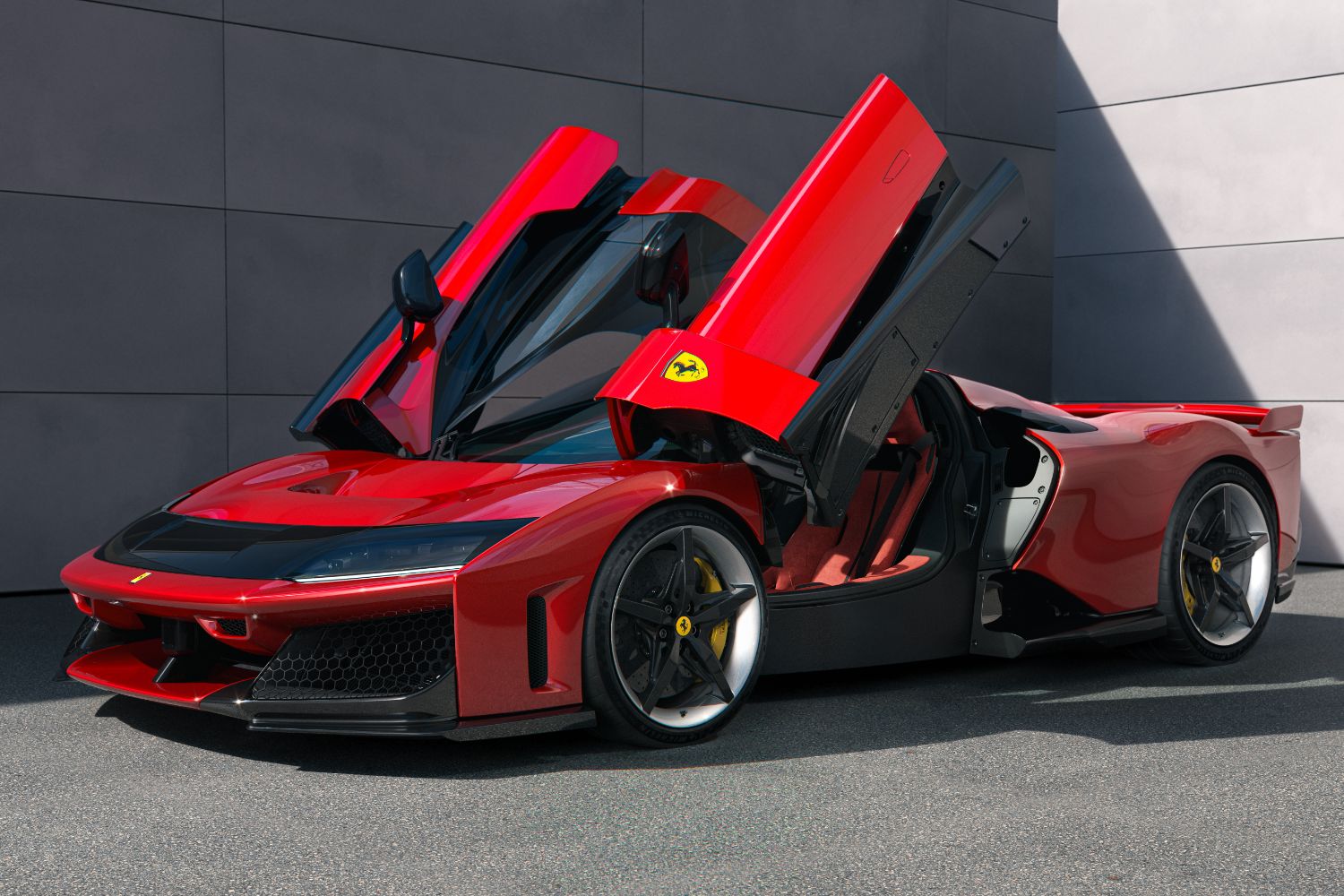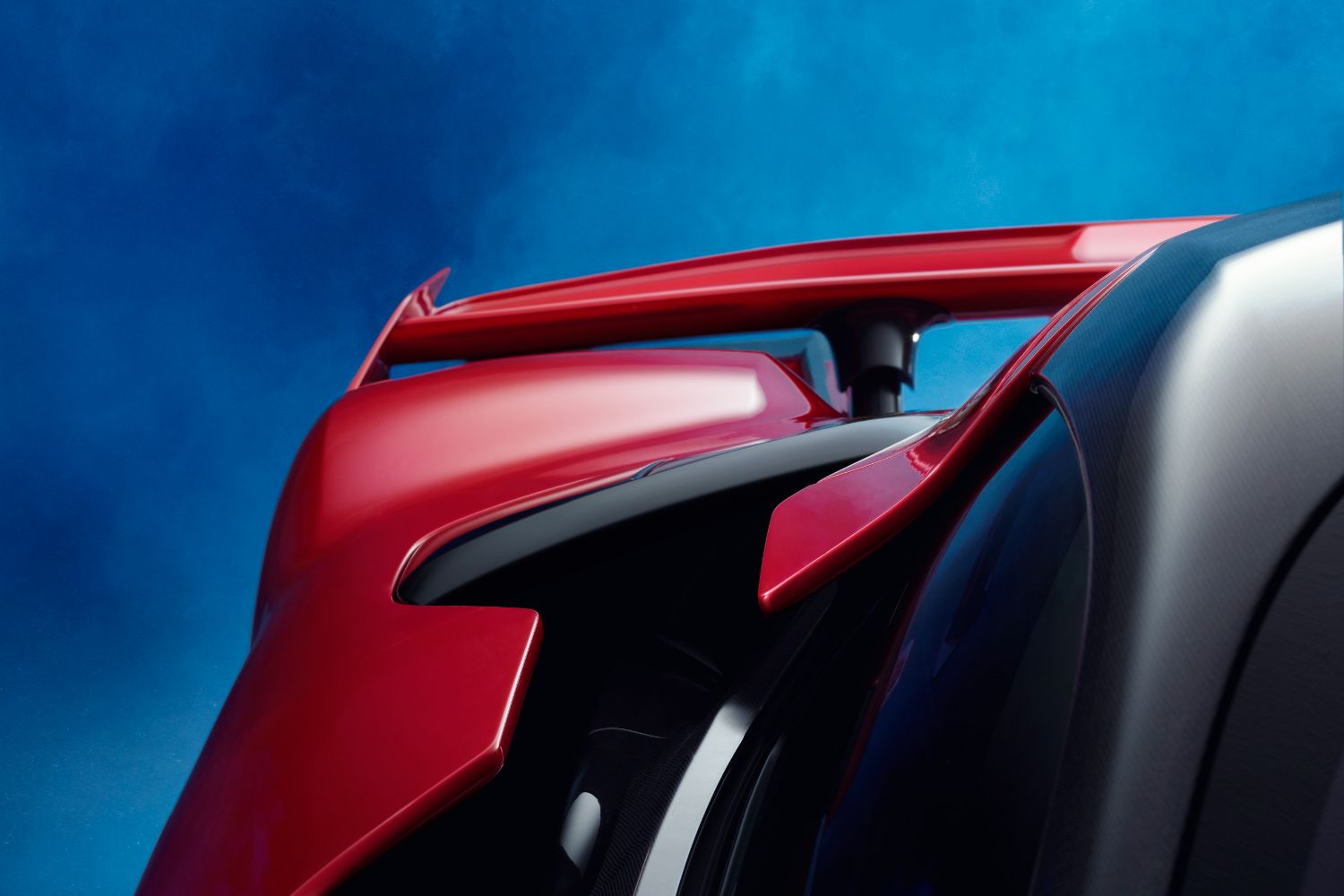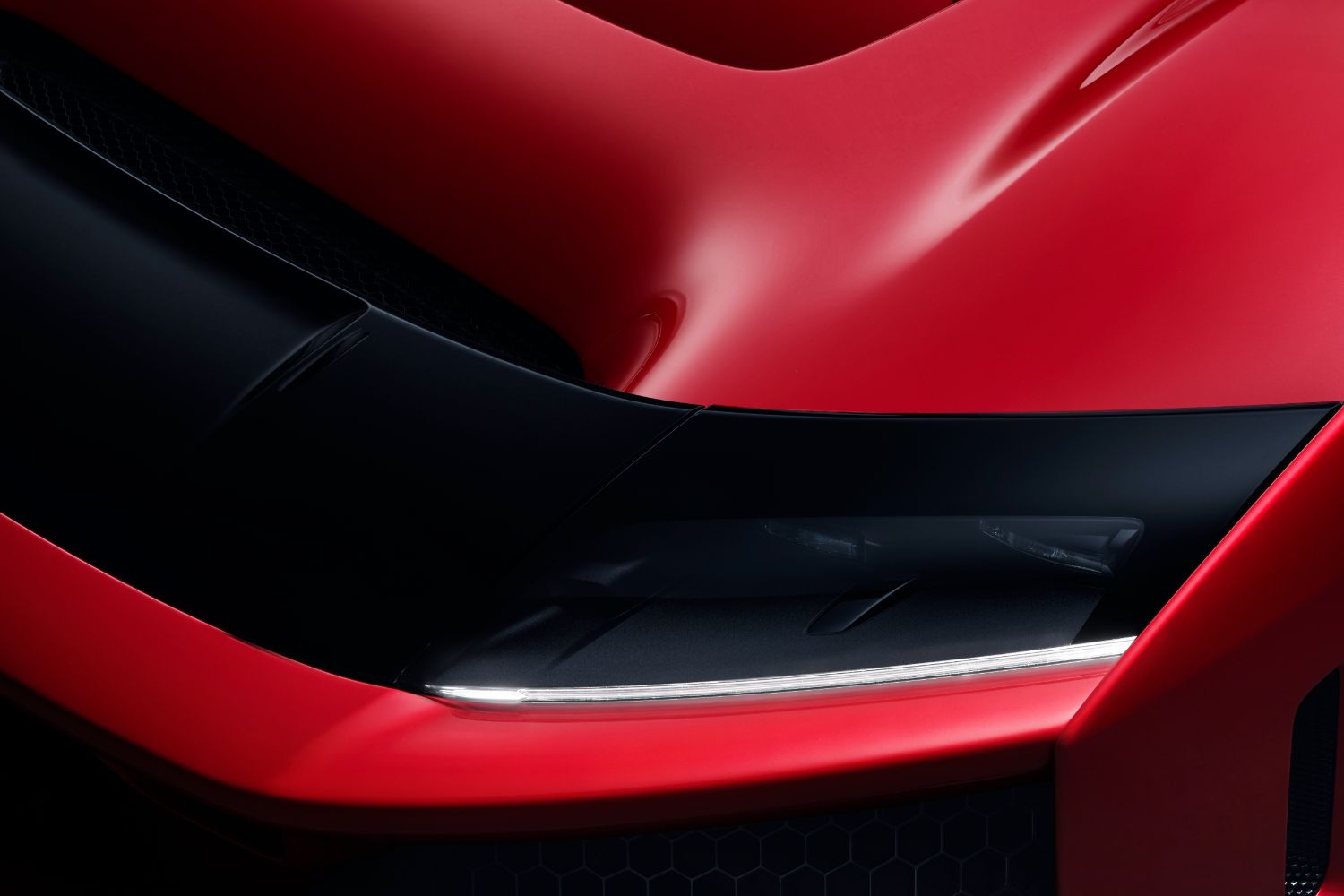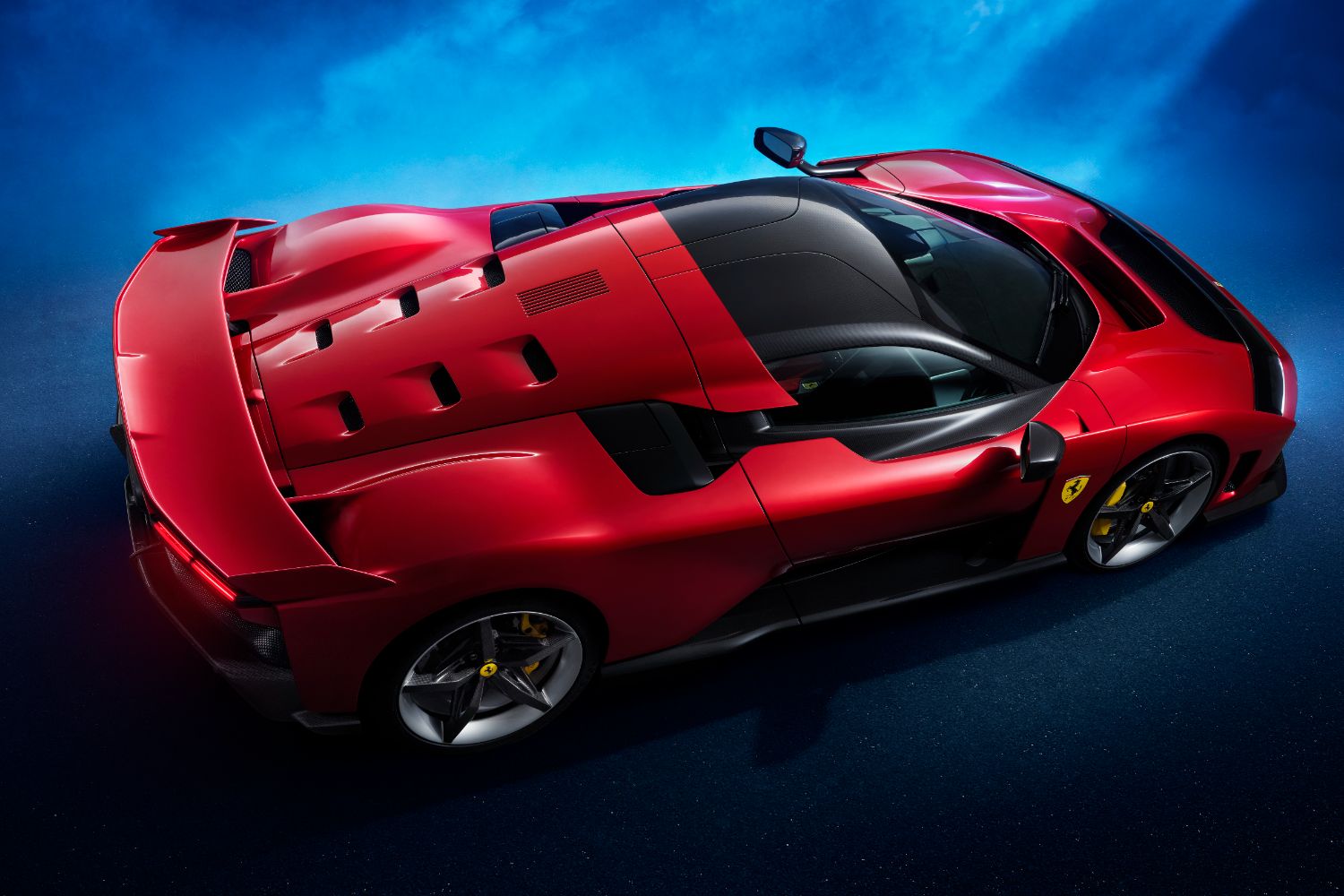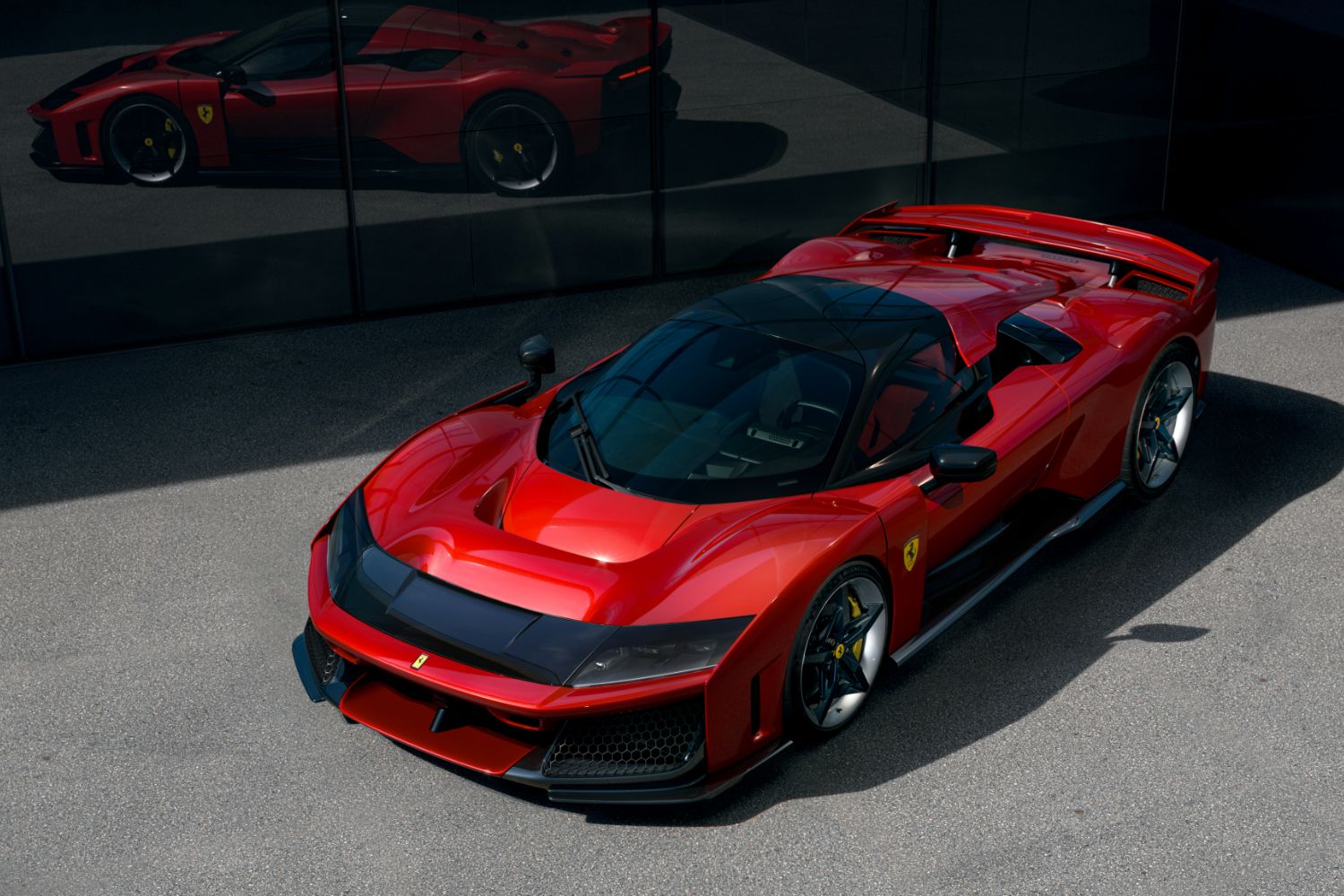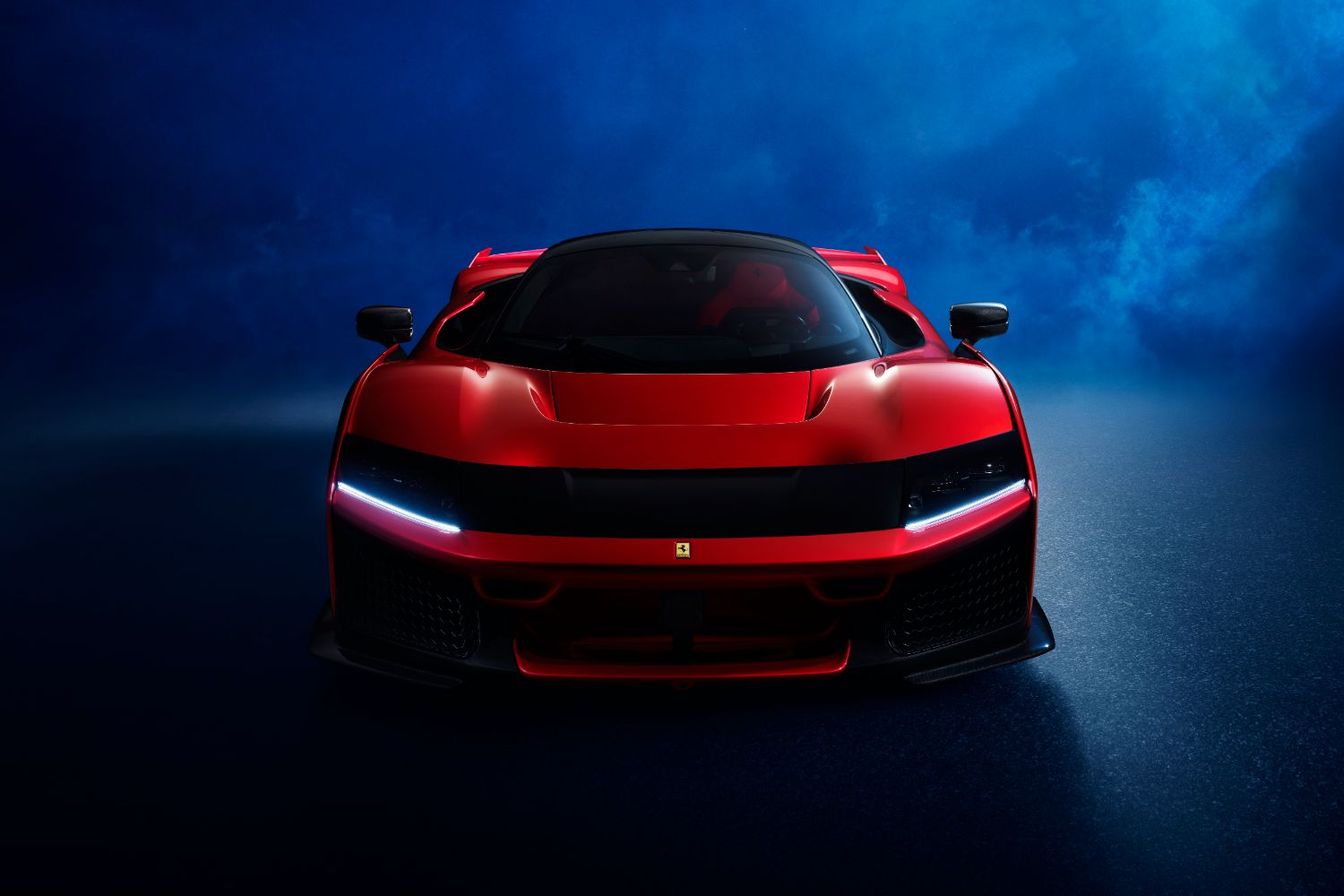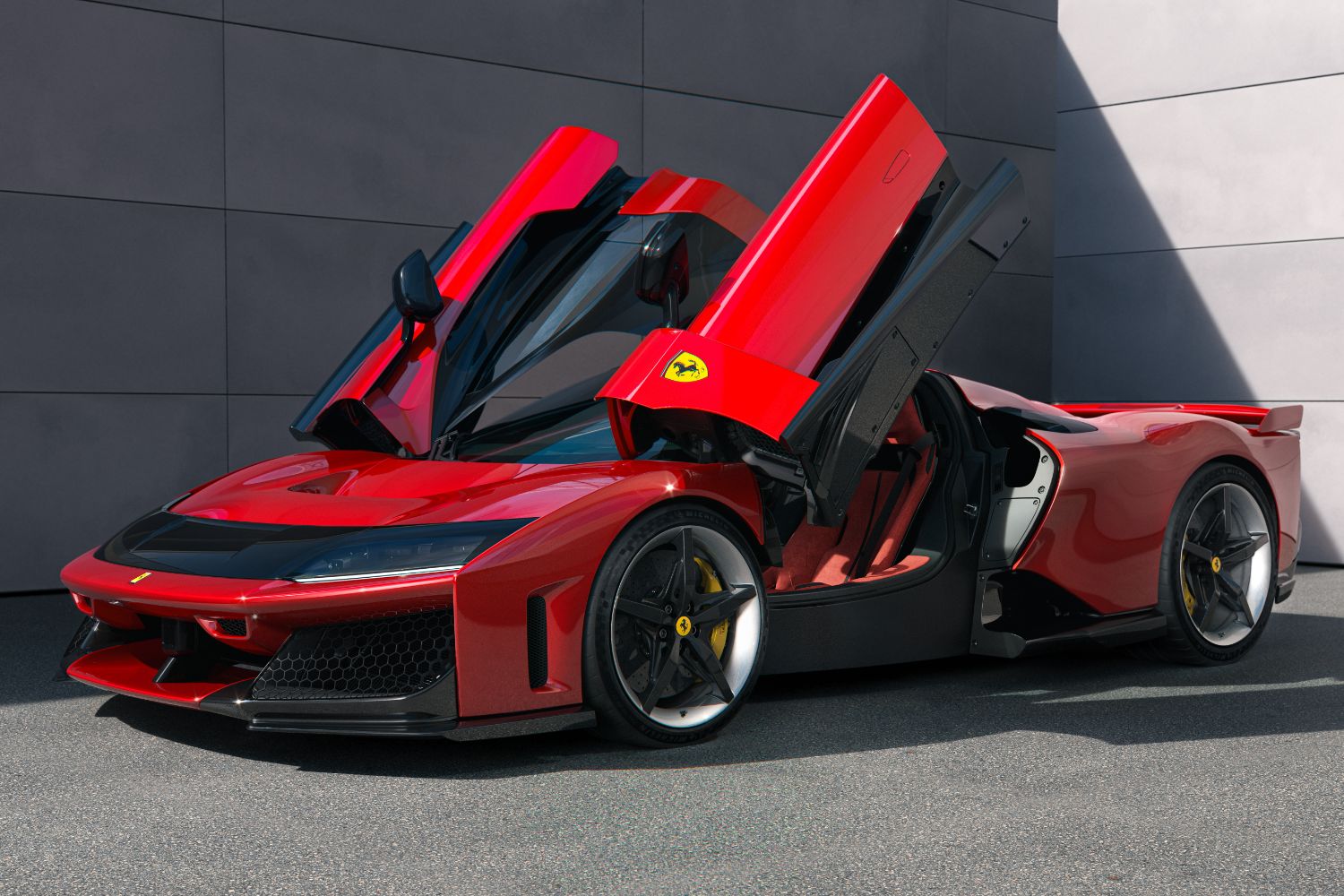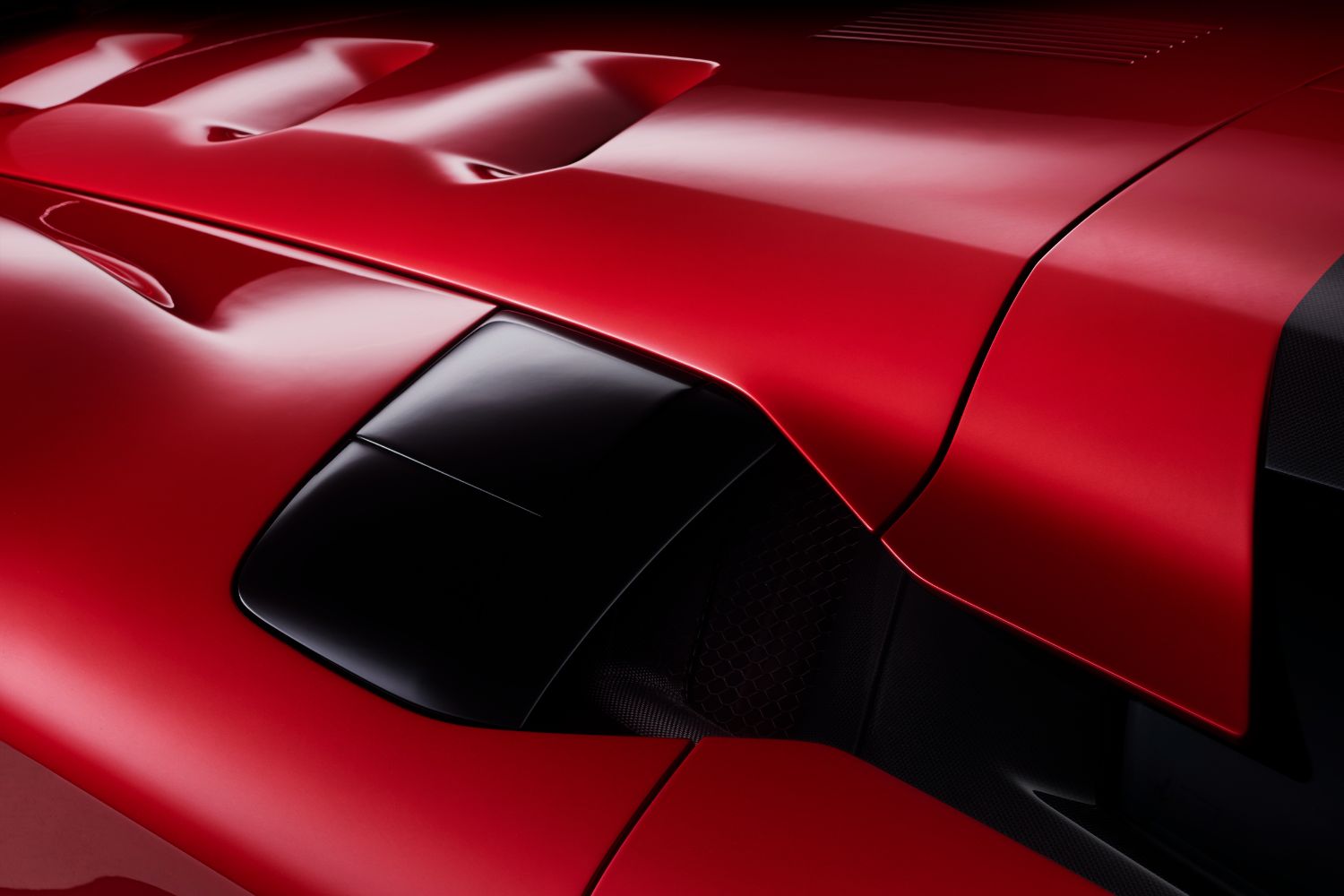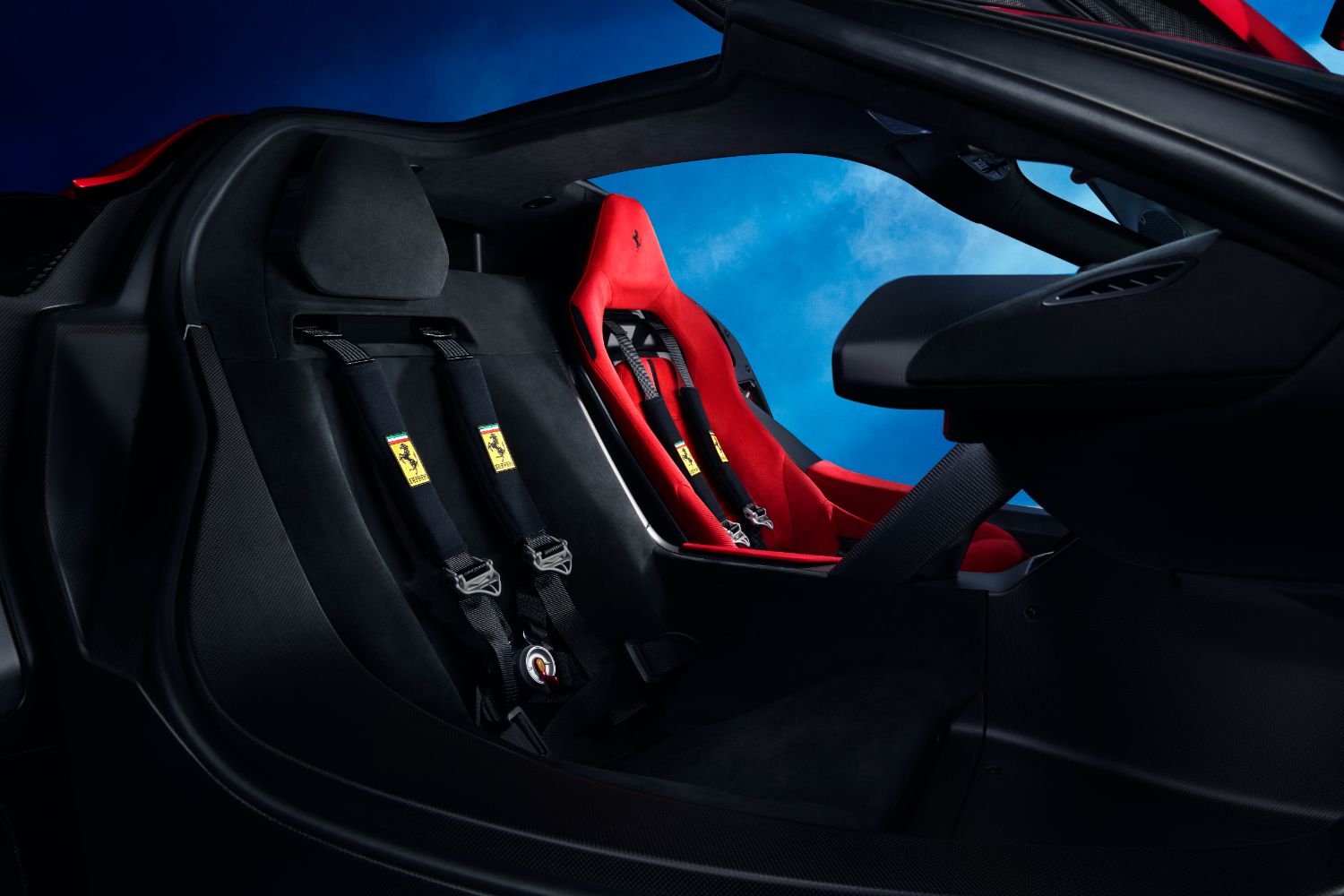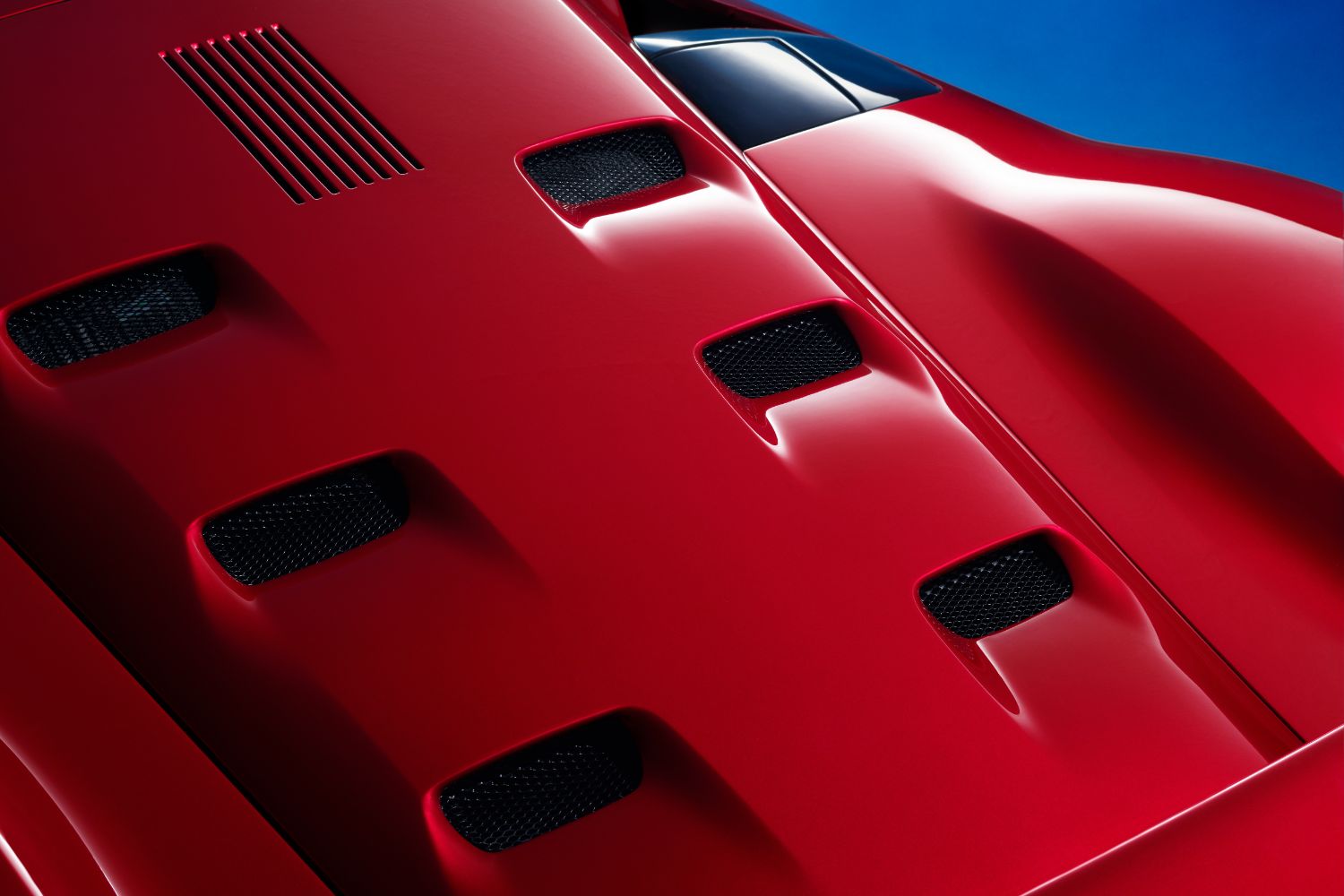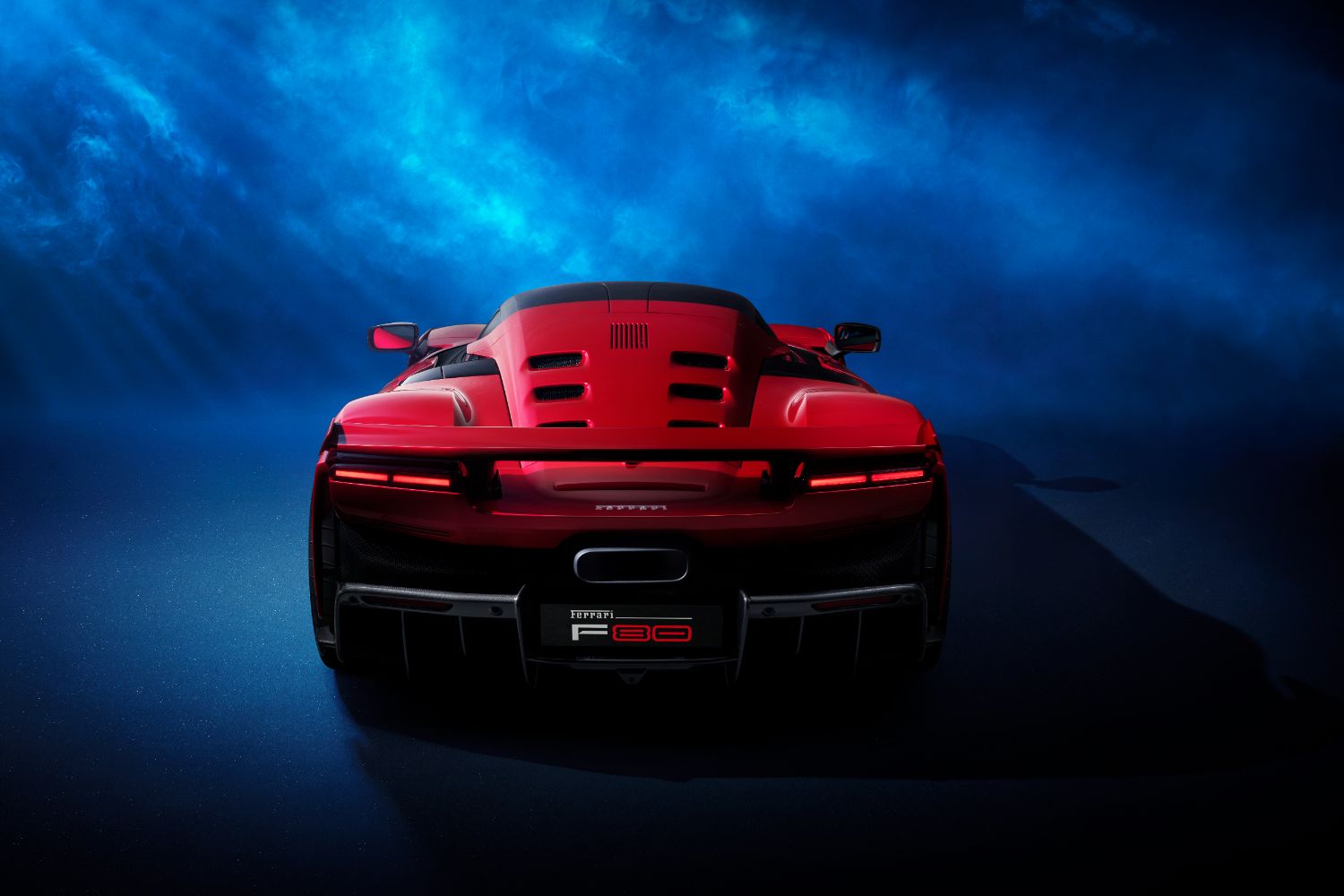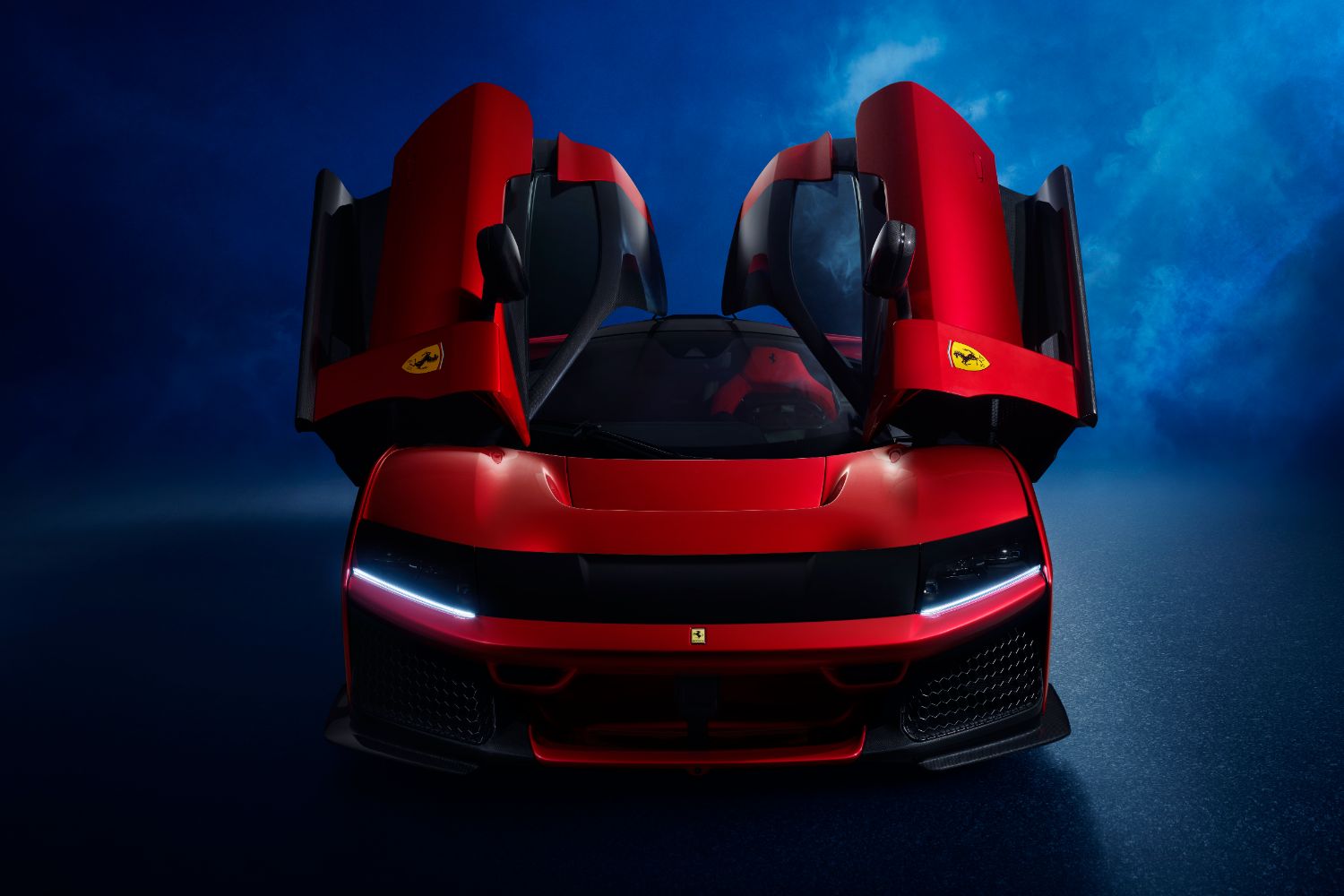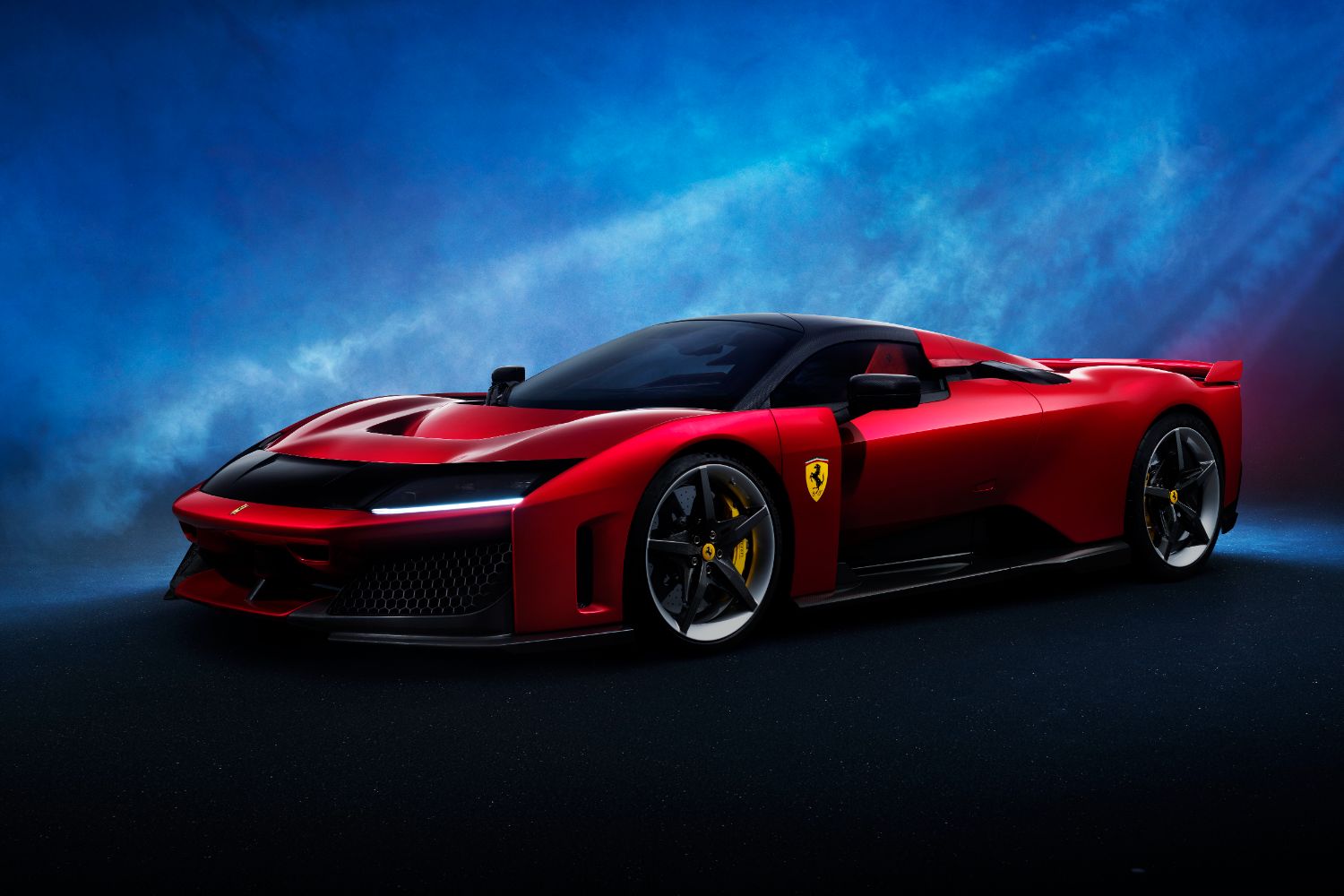Every few years, Ferrari pulls something big out of the bag. In the early eighties, it was the 288 GTO. Then there was the immortal F40. The lesser-spotted F50. The Enzo. The LaFerrari. And now there’s the F80.
V6 petrol engine
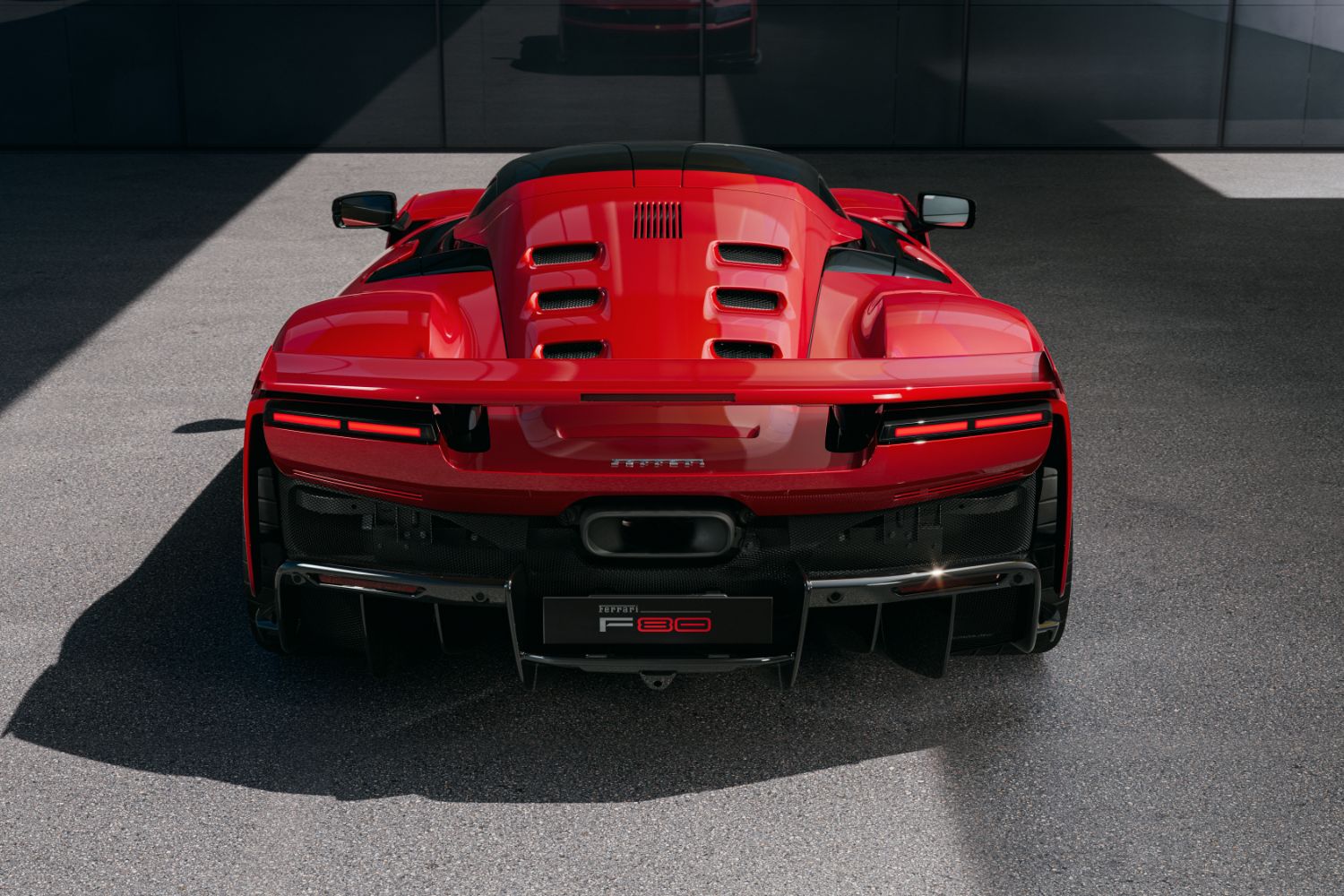
Ferrari’s latest hypercar takes a dramatic turn though - not only is it a hybrid, but it’s abandoned the LaFerrari’s V12 for a smaller, lighter V6.
In spite of its diminutive size, the 3.0-litre V6 petrol engine combines with the F80’s three electric motors (two front, one rear, developing 300hp between them) for a whopping 1,200hp.
How fast is it? The F80 will hit 100km/h in just 2.15 seconds, making it faster than the recently-launched McLaren W1 and even than the F1-based Mercedes AMG One. 0-200km/h takes just 5.75 seconds. The top speed is 350km/h.
The V6 uses a wide 120-degree angle, and is said to be related to the engine used by the spectacular 499P Hypercar which has won the Le Mans 24hrs twice in a row. Still miss that V12? Power is sent to the rear wheels by an eight-speed DCT gearbox while the front wheels are powered by the electric motors.
F1 style hybrid system
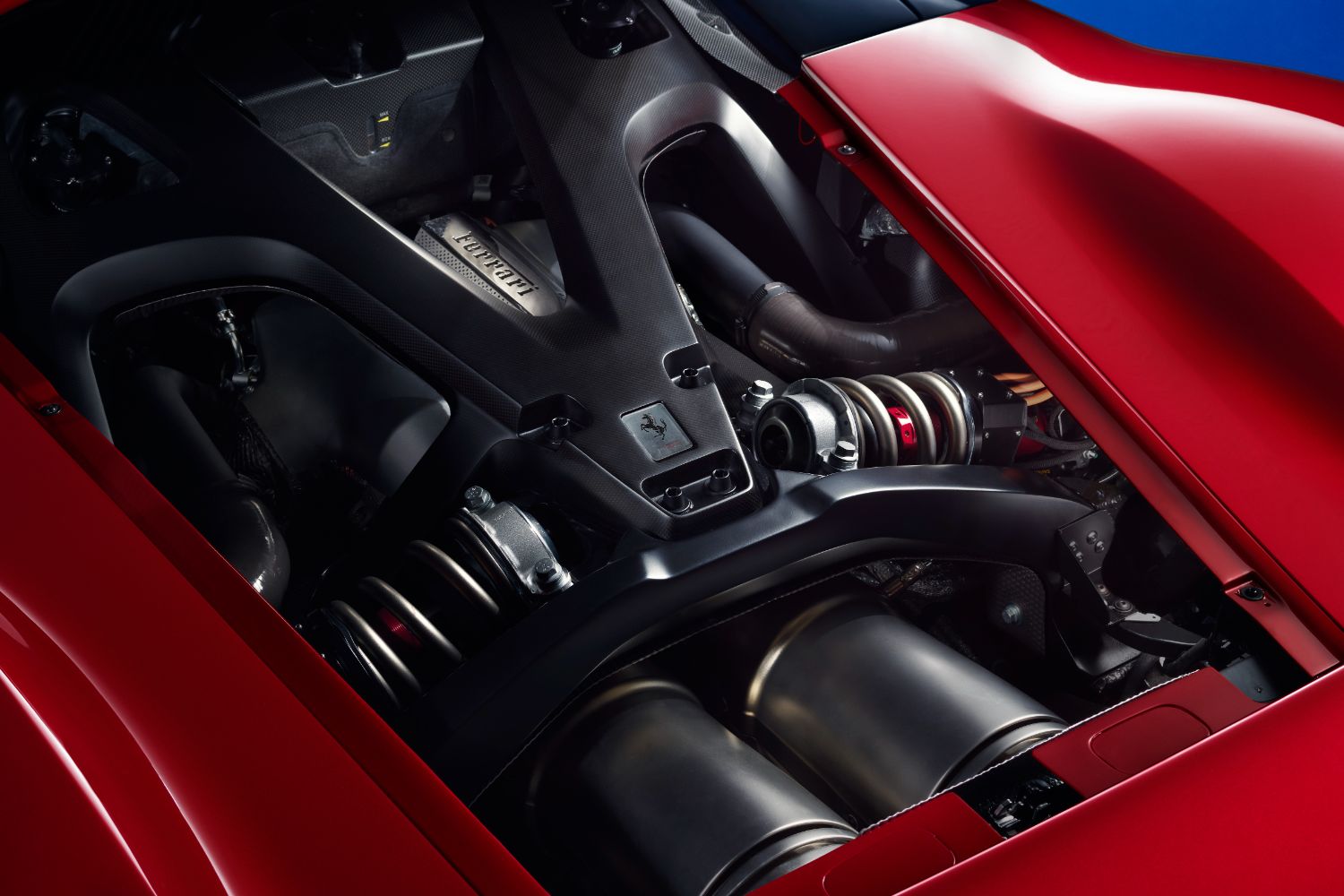
Ferrari claims that the F80’s electric motors also lean in on the company’s F1 experience. The main electric motors are MGU-K units, meaning they can transfer waste kinetic energy — brake energy recuperation by another name - to the F80’s battery pack.
There’s more to the F80’s clever electric systems though. The V6 engine’s two turbos are also electrically powered, which means they can spin up almost instantly to maximum performance at low engine speeds, handing over to more conventional exhaust gas pressure-driven turbocharging as the engine speeds up. But wait, there’s more - built into these e-turbos are also little MGU-H units, which can convert any excess rotational speed in the turbos back into electricity, which can be returned to the battery.
That battery is a 2.4kWh unit is designed to be as small and light as possible, while Ferrari has saved weight elsewhere by developing a single power control unit which can manage all of the various electrical demands that the F80 makes, whether that’s 800-volt (for the big battery stuff), 48-volts (for the active suspension), or 12-volts (for all the normal in-car stuff). It also means that there’s no need for a separate 48-volt battery, saving yet more weight.
Carbon and aluminium
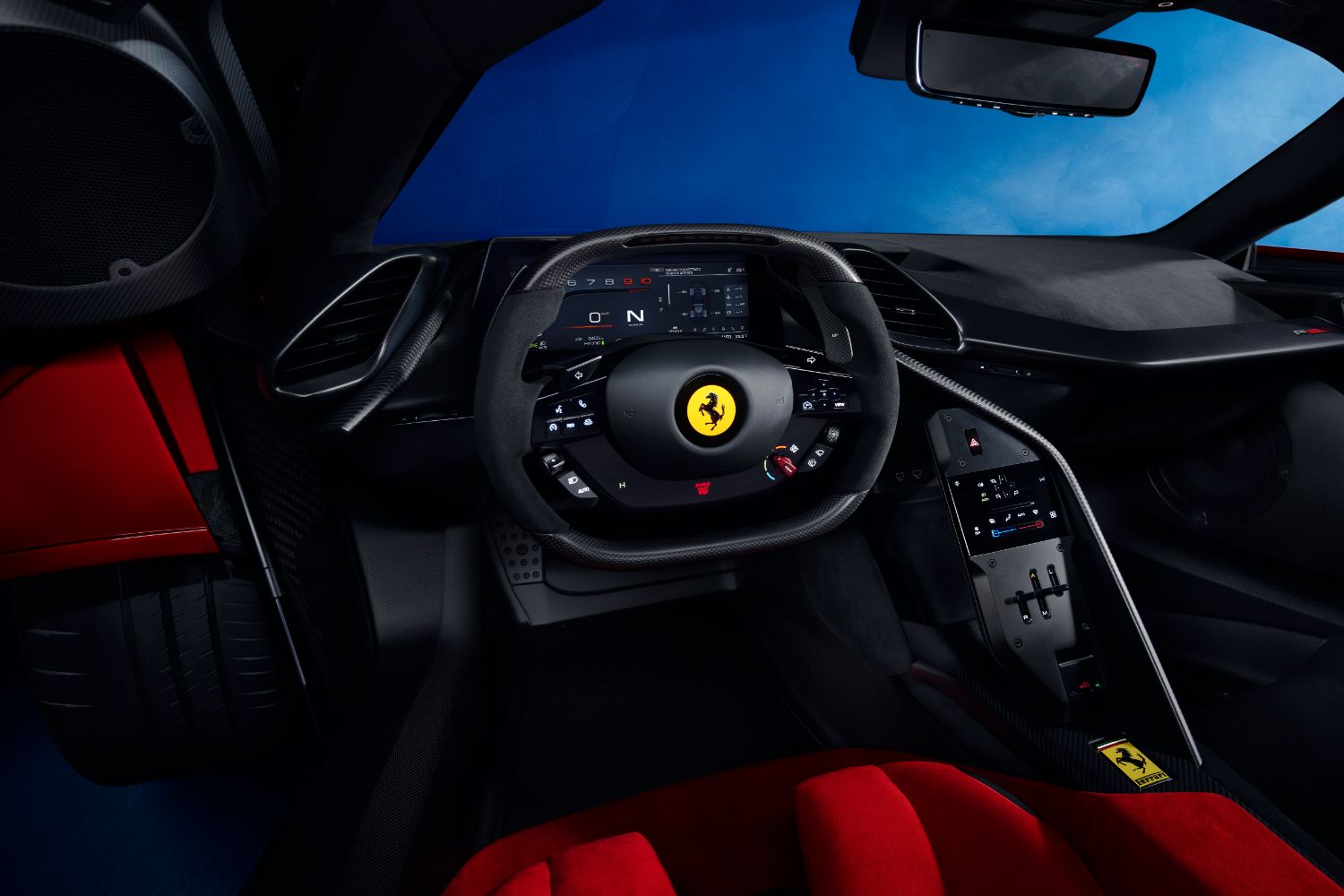
Speaking of saving weight, the F80’s structure is a mixture of carbon fibre and aluminium, with each material used for sections of the body and chassis where they’ll be most useful. Basically, the centre of the car - the tub - is carbon, as is the roof, while aluminium sub-frames are bolted on, front and rear, onto which are hung the suspension, steering, e-motors, and engine. Ferrari claims a ‘dry’ kerb weight of 1,525kg.
The brakes are carbon-ceramic, of course, but they use a new ‘long-fibre’ material developed by Brembo, which is said to improve heat dissipation and disc strength.
The exterior body panels are all carbon fibre, and Ferrari has thrown in some sweet retro references, including the full-width ‘visor’ treatment at the front - also seen in the recent 12Cilindri model - which references the 1970s 364GT/B Daytona. The way the front wheel arches stand boxily proud of the bodywork is meant to salute the F40. The rest of the F80 is far more contemporary, even futuristic, although you can see a little F40 influence in that vented rear engine cover.
Active suspension
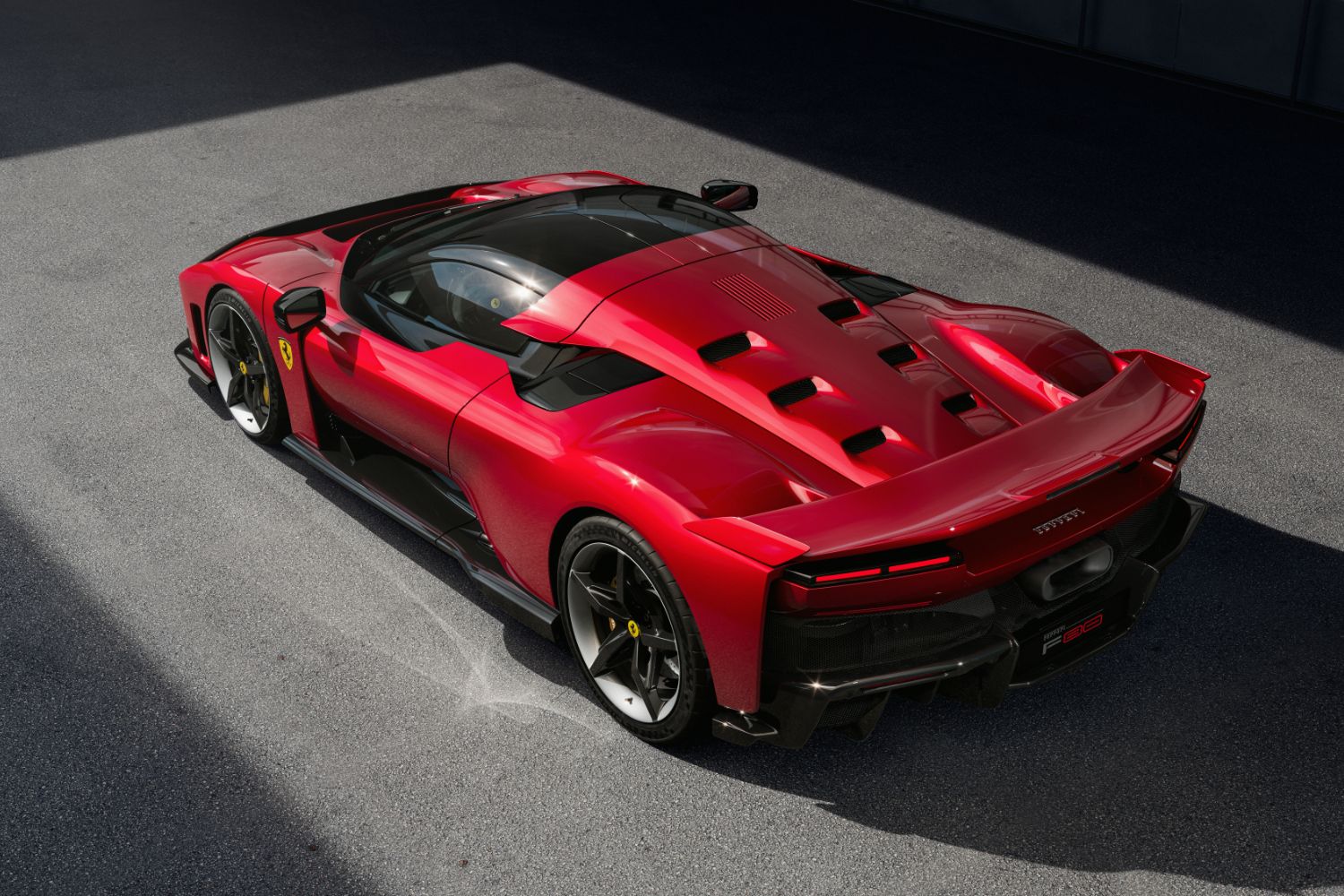
Underneath, the F80 gets active suspension, developed from that used in the four-door Purosangue, but massively revised and updated for this application. The system features completely independent suspension all round actuated by four 48V electric motors, a double wishbone layout, active inboard dampers and upper wishbones created with 3D printing and additive manufacturing technology, which is used here for the first time on a Ferrari road car.
Thanks to those motors acting on the suspension, Ferrari has been able to do away with anti-roll bars and camber correction, saving more weight. More importantly the claim is that the F80’s suspension squares the circle of needing to keep the body as flat as possible while also allowing for a comfortable ride quality.
This trick suspension also constantly manages the ride height, maximising mechanical grip from the tyres at lower speeds, but dropping the bodywork down for serious aero performance at higher speeds. Ferrari’s claim is that the F80 develops 1,000kg of downforce at 250km/h.
Trick aero
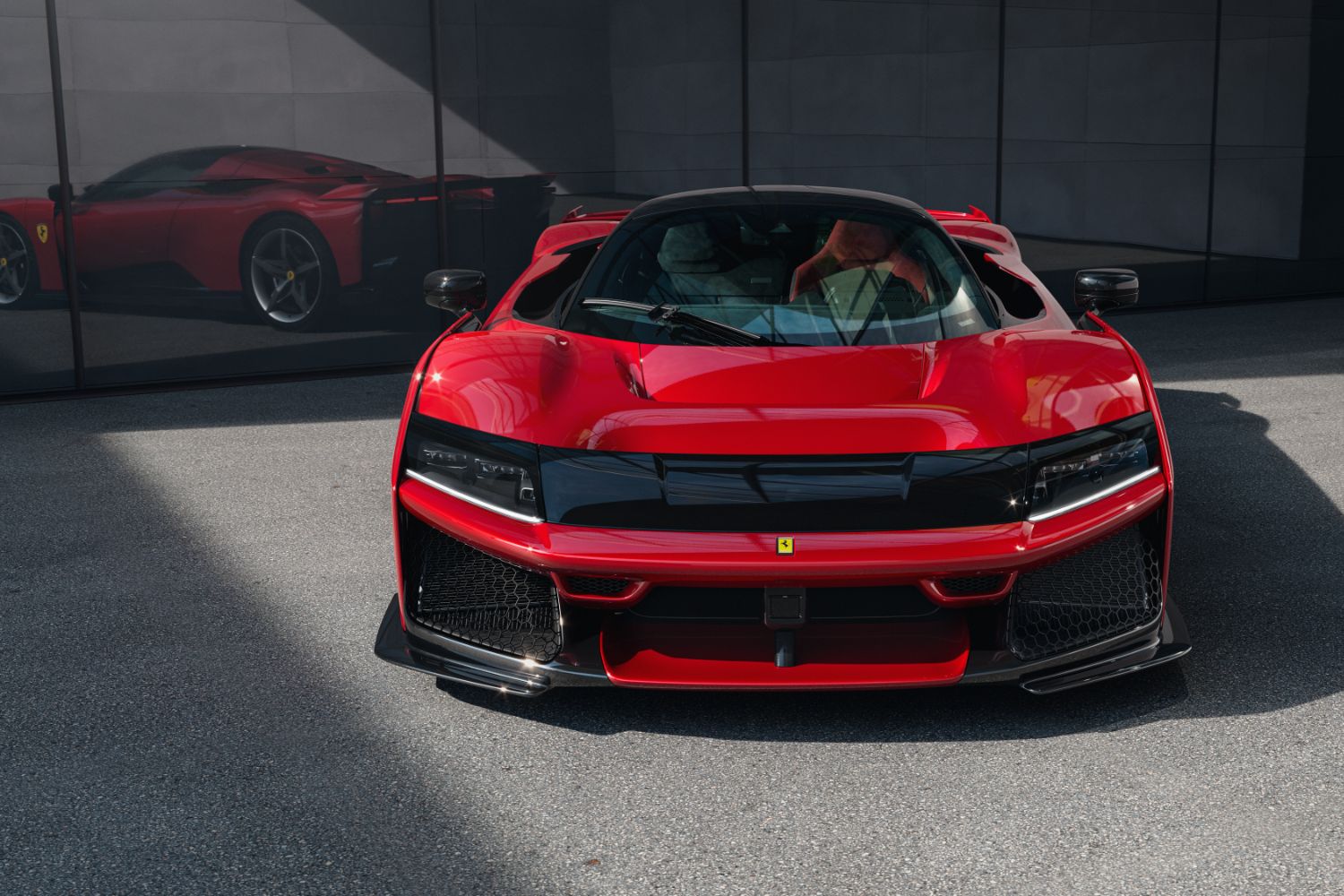
That aero performance is aided by a Le Mans-style ‘s-duct’ tunnel in the nose, while the laid-back, feet-up driving position in the cabin allows for F1-style ‘keel’ aero shaping under the floor. Although it’s a road car, the F80 uses aero ‘flicks’ and barge-boards directly inspired by Le Mans and F1 experience, while at the rear the engine and gearbox are angled slightly to give the rear diffuser more space in which to work - that diffuser is a full 1,800mm long, potentially the biggest ever fitted to a road car.
The rear wing is fully active, and automatically sits up at an 11-degree angle under braking, for better stability, or drops down to almost flat for a low-drag, high-speed mode.
The F80’s body doesn’t just have to manage the air flowing over and around it, it also has to deal with the immense heat developed by its engine and electric motors - all 200kW of it.
Inside, the cabin is utterly focused around the driver, who sits in a bright red bucket seat. The passenger is relegated to ‘+1’ status, with a seat that’s moulded into the chassis. The cabin is designed to keep the F80’s frontal area as small as possible.
The ovoid wheel holds most of the major controls, and Ferrari has gone back to using more physical buttons rather than touch-sensitive pads. There’s also a salute to the old open-gate gear shifter on the centre console.

